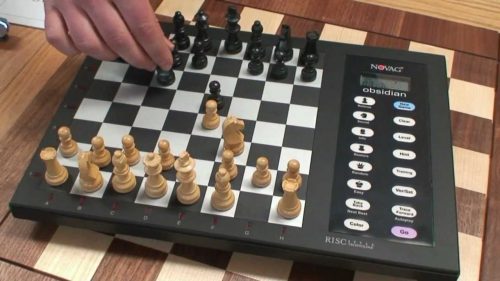- makeITcircular 2024 content launched – Part of Maker Faire Rome 2024Posted 2 weeks ago
- Application For Maker Faire Rome 2024: Deadline June 20thPosted 2 months ago
- Building a 3D Digital Clock with ArduinoPosted 7 months ago
- Creating a controller for Minecraft with realistic body movements using ArduinoPosted 7 months ago
- Snowflake with ArduinoPosted 8 months ago
- Holographic Christmas TreePosted 8 months ago
- Segstick: Build Your Own Self-Balancing Vehicle in Just 2 Days with ArduinoPosted 8 months ago
- ZSWatch: An Open-Source Smartwatch Project Based on the Zephyr Operating SystemPosted 9 months ago
- What is IoT and which devices to usePosted 9 months ago
- Maker Faire Rome Unveils Thrilling “Padel Smash Future” Pavilion for Sports EnthusiastsPosted 10 months ago
Automatic chess board design

I have a chess computer (not pictured), it’s quite a good way to play longer games at home. It’s hard to find an opponent online to play a game that might last 4 hours, and even if you find one, it’s easy for one side or the other to get distracted or lose interest. A chess computer is a good way to sit down at a real board and play a long game of chess without distractions.
Typically you input your moves by pressing down on the piece you want to move, then moving it, and then pressing down on the square you moved it to. There is a membrane switch underneath each square, which is what you’re actuating by pressing the piece down. Once you’ve made a move, the computer thinks for a while and eventually beeps to alert you that it’s decided on a move. The LCD display then tells you what it wants to move in a basic algebraic notation, e.g. mine says “E7E5” if it wants to move the piece from e7 to e5. You are then responsible for moving the computer’s piece, the same way you moved your own: press down on the square you’re moving it from, then press down on the square you’re moving it to.
This is quite good, but we ought to be able to detect the user’s move without making him press down on the squares, we ought to be able to apply the computer’s move without making the user move the pieces, and it ought to be a bit hackable so that we can plug it into lichess for example instead of only being able to play against the built-in AI.
















Pingback: Automatic chess board design - Open Electronics - Amazonsearch.io
Pingback: Automatic chess board design - BostonHiTech.com - Latest Technology News
Pingback: Automatic chess board design – Open Electronics – Decorbeauty Online